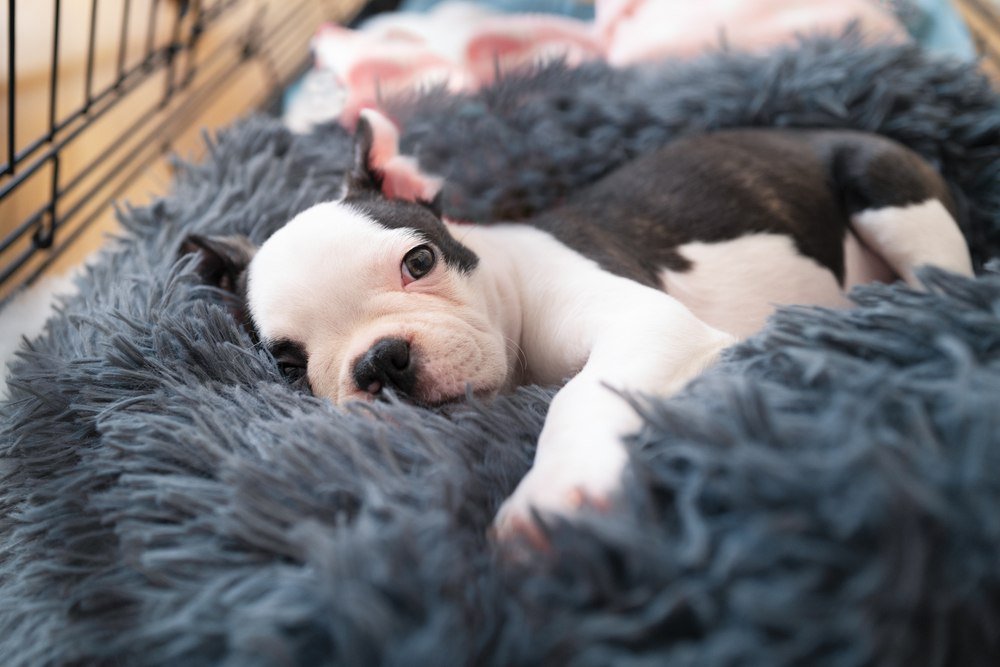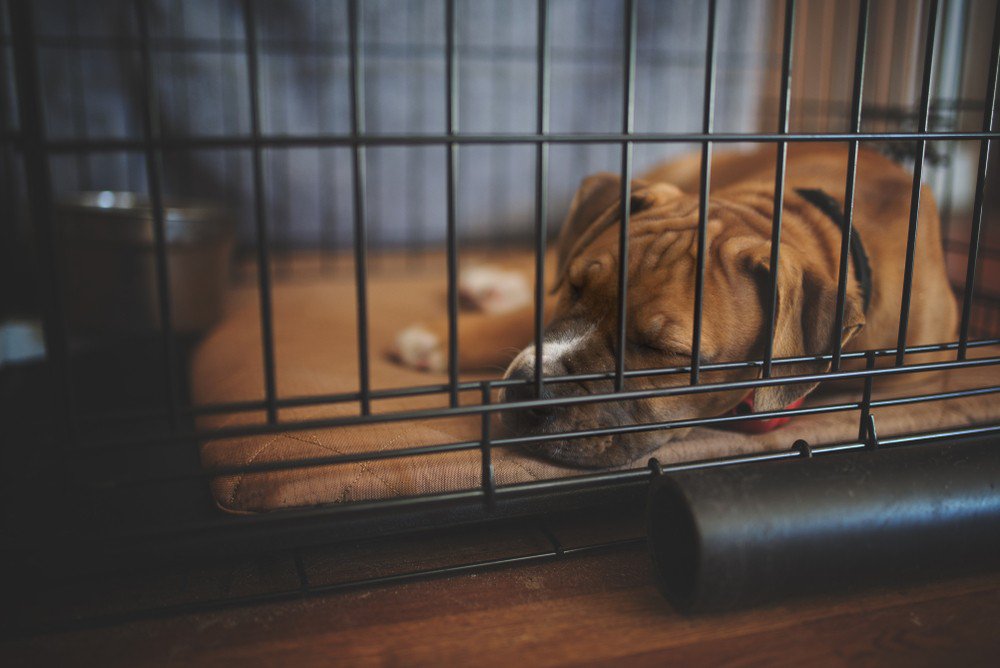Tips for Crate Training Your Puppy
What Are the Benefits of Crate Training?

Dogs are naturally denning animals and often find it comforting to have a cozy, small space of their own. By providing a properly sized crate (we’ll get into how to determine that soon), you’re tapping into your dog’s instincts to seek out a secure and snug space to rest.
When introduced to their crate properly, your new canine companion will view this as a safe space to relax. Not only does providing a crate give your dog a space of their own, it can also help with potty training. Dogs naturally avoid soiling their sleeping area, and crate training can help teach your pet that outside is where their “business” should be done.
One of the biggest benefits of crate training is that it helps keep your puppy safe when left unattended. Puppies love to chew, and having a crate ensures they can’t accidentally gnaw on unsafe household items like wires. It also helps protect things you would like to keep in one piece, like your shoes or furniture.
What Sized Crate Should I Get for My Puppy?
There are lots of crate styles to choose from, like wire crates, plastic crates and soft crates. Once you determine which one is the right fit for your puppy, you need to pick the appropriately sized crate. Your dog should be able to comfortably turn around, stand up and lie down. However, you don’t want the crate to be too big. If it’s too large, your puppy may soil one side of the crate and sleep on the other. If you have a large breed puppy and don’t want to purchase several new crates over the next few months, you can buy one large crate with an adjustable divider.

What’s the Best Spot for My Puppy’s Crate?

You want to be able to hear your pup if they ask to go out (especially at night), but also want to keep the crate in a quieter part of your home. You don’t want your pup to feel isolated, either. Options like living rooms are a good choice, or near your bedroom. If crates need to be moved from one spot to another daily, some pet parents find two crates handy – one for the day and one for nighttime.
Crate Training Tips
With crate training, it's imperative to make the crate an enticing place where your pet wants to spend their time. Associate the crate with positive things like treats or play. You can do this by giving your dog a chew toy filled with treats while they’re in their crate or tossing toys into the crate for your puppy to retrieve. You can also feed your puppy meals in their crate to help build a positive association with the space.
-
Add some cozy bedding or towels, but avoid super plush dog beds in the beginning. These can absorb urine and make it hard to tell if your puppy peed in their crate.

- Before putting your puppy in its crate, be sure to take them out for a potty break first. As soon as you let them out of their crate, head back outside for another potty break. Each puppy is different, but with patience and positive reinforcement, potty training can be achieved!
-
When introducing your puppy to their crate, don’t leave them in there for long periods of time. Start with shorter timeframes with the door closed (a minute or two) and work your way up from there. Pet cameras can come in handy here, allowing you to keep a close eye on your puppy while you’re out of the room.
-
Puppies are still learning to “hold it” and should not be left in their crate for too long. Generally, puppies under 6 months should not be left in their crate for longer than three to four hours at a time. If left alone for extended periods, they may soil their crate.
-
The crate should be a safe place that your puppy feels comfortable in - never use the crate as punishment!
Not only does crate training help keep your new furry friend safe, it can aid in potty training and gives your puppy a cozy place to call their own. For more information on finding the right crate for your puppy, contact us at The Puppy Palace.
